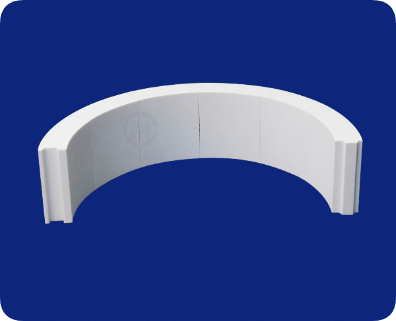Top articles
- What should be paid attention to when choosing to use wear-resistant ceramic linings
- The difference between wear-resistant ceramic pipes and traditional steel pipes
- Precautions for the application of wear-resistant ceramic glue
- Application of wear-resistant ceramic pipes
- High-purity 99.7% alumina ceramics helpful to semiconductor manufacturing technology
- Alumina Ceramic Grinding Balls: High-Efficiency Solutions for Industrial Grinding
- How to Select Suitable Wear-Resistant Ceramic Lining Tiles in the Mining Industry
- Advantages of Ceramic Rubber Composite Liners in Industrial Applications
- How to Install Alumina Ceramic Liners for Long-Lasting Adhesion?
- 99% alumina bulletproof ceramics are the preferred materials for protective devices
Latest articles
- What should be paid attention to when choosing to use wear-resistant ceramic linings
- The difference between wear-resistant ceramic pipes and traditional steel pipes
- Precautions for the application of wear-resistant ceramic glue
- Application of wear-resistant ceramic pipes
- High-purity 99.7% alumina ceramics helpful to semiconductor manufacturing technology
- Alumina Ceramic Grinding Balls: High-Efficiency Solutions for Industrial Grinding
- How to Select Suitable Wear-Resistant Ceramic Lining Tiles in the Mining Industry
- Advantages of Ceramic Rubber Composite Liners in Industrial Applications
- How to Install Alumina Ceramic Liners for Long-Lasting Adhesion?
- Welcome to EXPOMIN 2025
Your browsing history

What should be paid attention to when choosing to use wear-resistant ceramic linings
Wear resistant ceramic linings are a type of ceramic material used to enhance the wear resistance of equipment. They are made of alumina (AL203) as the main material, supplemented with other ingredients, and sintered at a high temperature of 1700°C. Wear-resistant ceramics are widely used in coal conveying, material conveying systems, powder making systems, ash discharge, dust removal systems and other mechanical equipment with large wear in thermal power, steel, smelting, machinery, coal, mining, chemical, cement, port terminals and other enterprises. Different types of products can be selected according to different needs.When choosing to use wear-resistant ceramic linings, it is necessary to consider their use environment and working conditions, as well as the size and feed content of the equipment. The following are some factors to consider:
1. Use environment: Wear-resistant ceramic linings usually have high corrosion resistance and wear resistance, so they are very useful in some harsh environments (such as chemical, cement, mining, etc.). However, factors such as temperature, humidity, and corrosive substances in the environment will affect the performance and service life of the lining. Therefore, these factors need to be considered when choosing a lining.
2. Working conditions: Working conditions include factors such as the operating speed, pressure, and impact force of the equipment. Different working conditions require the selection of liners of different hardness and strength. For example, in a high-impact environment, you may need to choose a harder and more impact-resistant liner.
3. Size: The size of the wear-resistant ceramic liner is usually determined according to the size of the equipment. Choosing the right size ensures that the liner can fully cover the surface of the equipment and reduce the wear caused by the gap.
4. Aluminum content: Aluminum content is an important parameter of the wear-resistant ceramic liner, which affects the hardness, wear resistance, and thermal stability of the liner.
In some specific applications, it may be necessary to select a liner with a specific aluminum content. However, the choice of aluminum content is also affected by the equipment environment and working conditions, and needs to be selected according to actual conditions.
Choosing a suitable wear-resistant ceramic liner requires considering factors such as the use environment, working conditions, size, and aluminum content. In order to meet the working conditions of the equipment, you may need to seek the help of professionals to ensure that the most suitable liner is selected.









